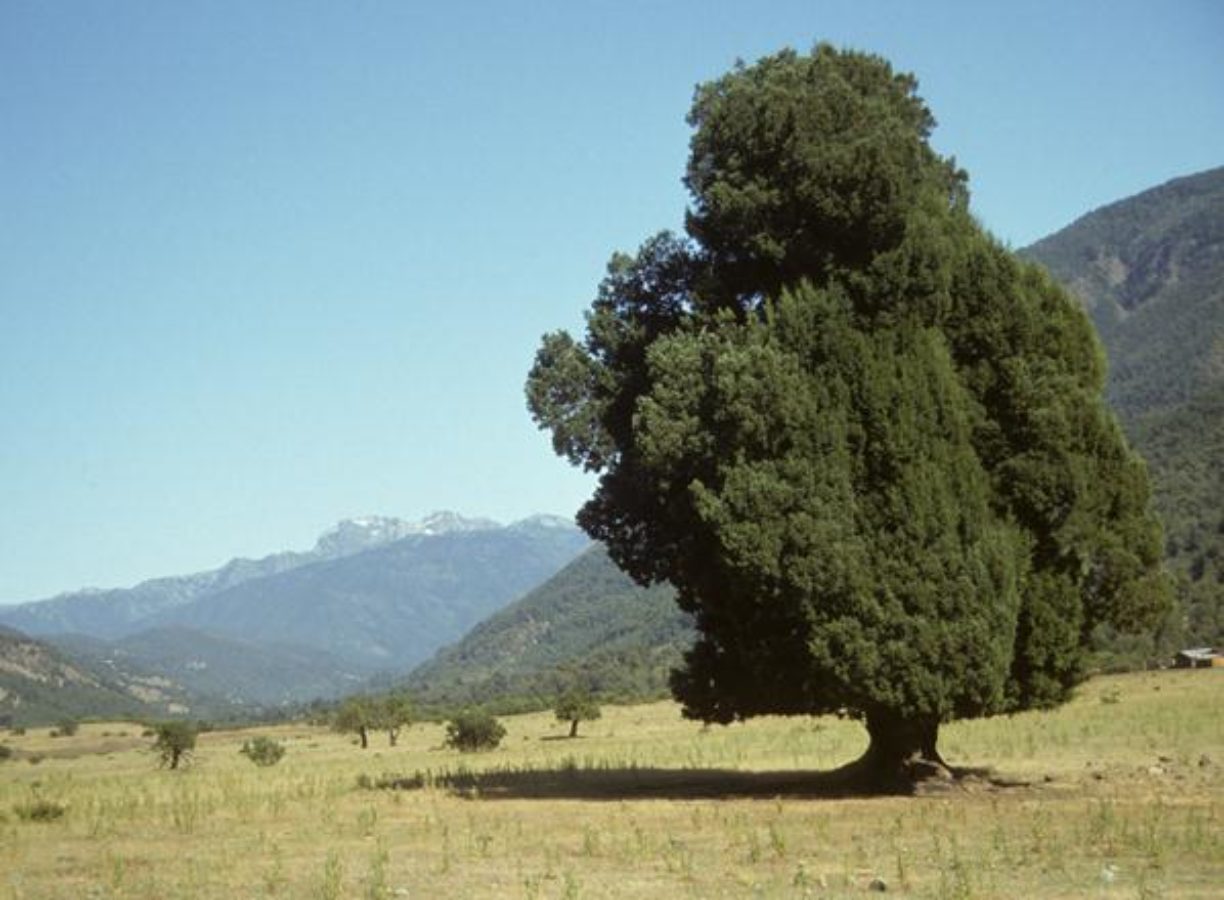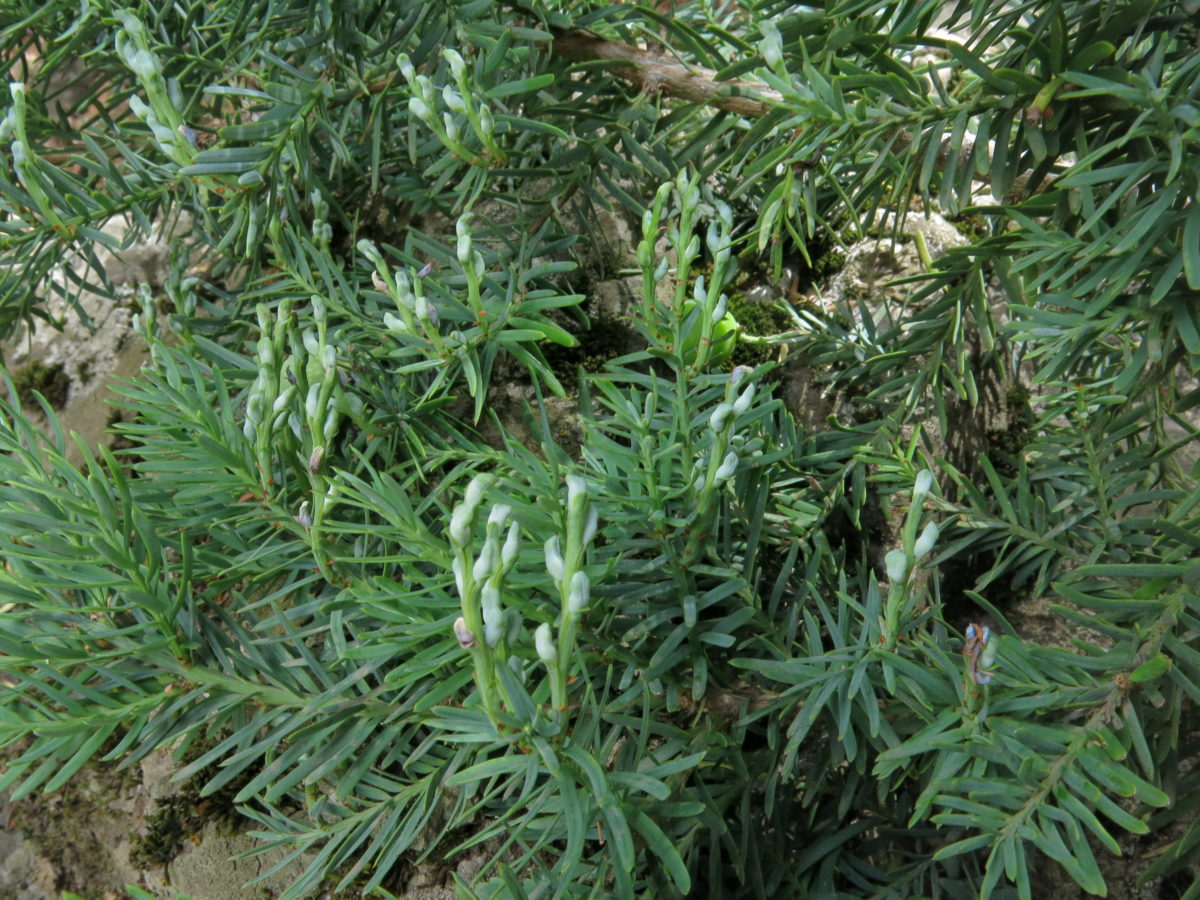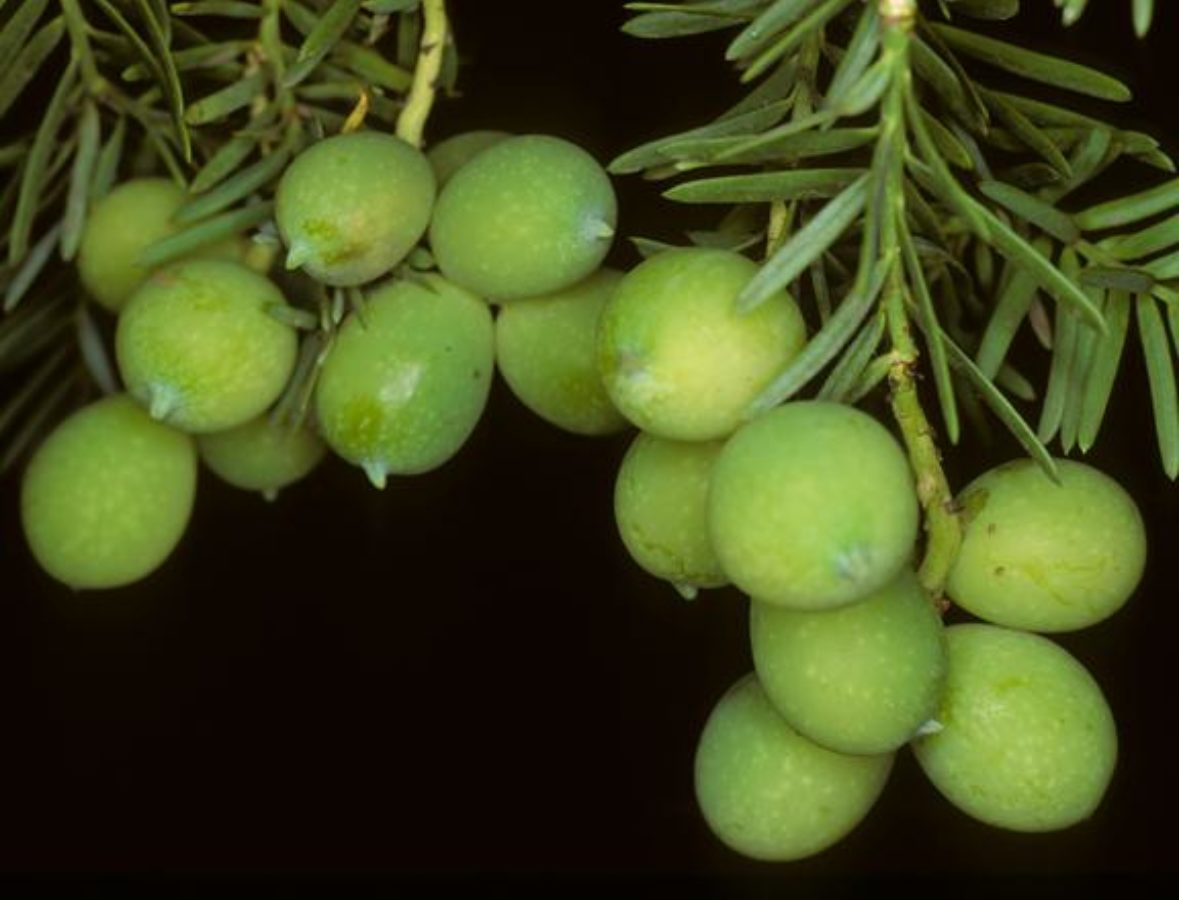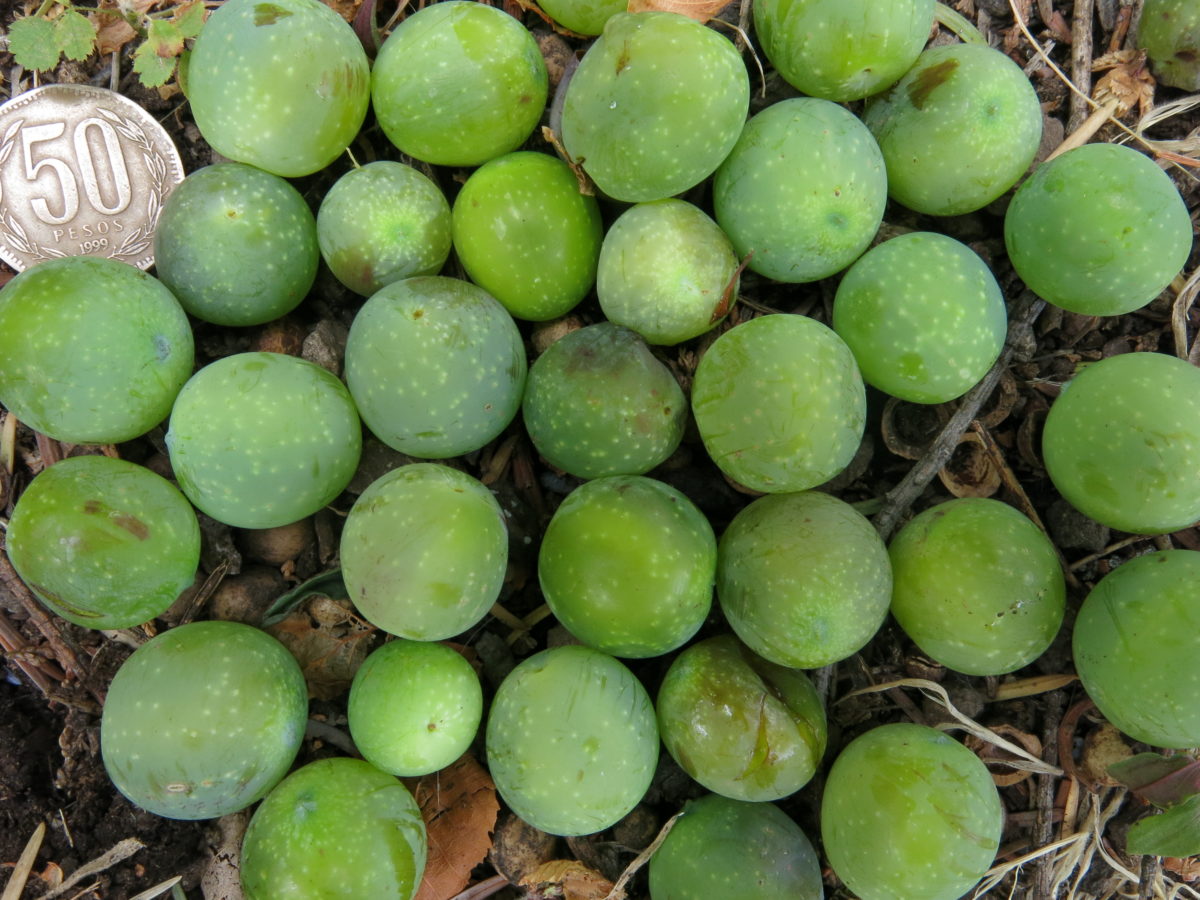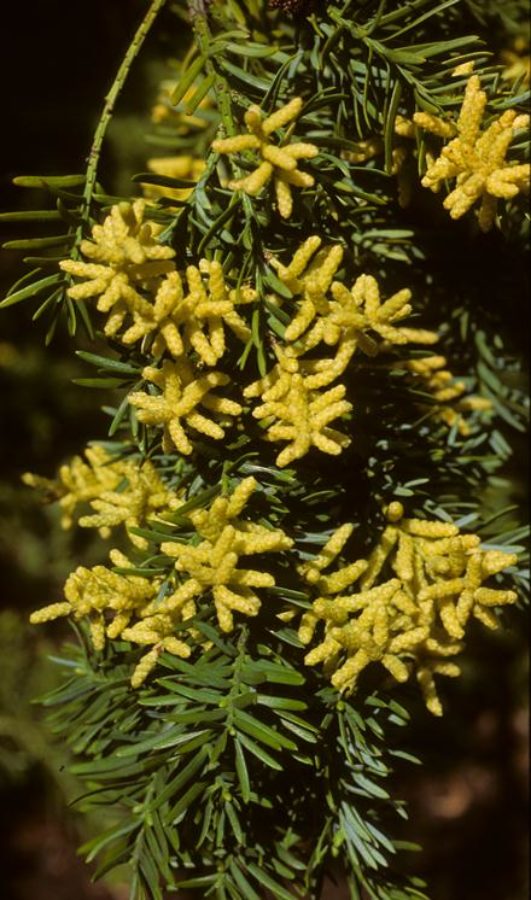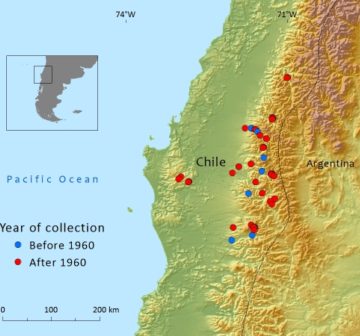Podocarpaceae
Prumnopitys andina
Endemic to Chile where it has a restricted distribution and is threatened by hydro-electric schemes, grazing and afforestation
Description
Habit
Evergreen tree to 15m tall, crown broadly pyramidal or rounded; trunk smooth, 0.5-1m in diameter, bark grey. Branches verticillate or almost so, densely covered by leaves.
Foliage
Leaves 1-2.5 x 0.15-0.2cm, simple, alternate, almost sessile, linear, slightly falcate, usually dull bluish green, 2 whitish stomatal bands below, with a short mucron at the apex.
Cones
Male-cones in spikes, each subtended by a linear-lanceolate bract.; female-cones a plum-like fruit, 2-3cm long, yellow when ripe, sweet-tasting; flowers in november. Seed ovoid; fruits mature from january to march.
Human Uses
Although the wood is of value and was traditionally been used for house building, there is little evidence that the wood is widely used today.
References and further reading
- Benoit, C.I. (ed.). (1989). Red data book on Chilean terrestrial flora. (Part One). pp. 91. Chilean Forestry Service (CONAF), Santiago.
- Covas, G. (1995). Flora Fanerogámica Argentina. Fascículo 4. pp. 23. CONICET.
- Escobar, L. (1999). Lleque. Prumnopitys andina (Poepp. ex Endl.) de Laub. Ficha Forestal. Chile Forest: 276
- Farjon, A. and Page, C.N. (compilers) (1999). Conifers. Status Survey and Conservation Action Plan. IUCN/SSC Conifer Specialist Group. IUCN, Gland, Switzerland and Cambridge, UK.
- Gosling, P. G., Ives, L. M., Cunningham, V. J., Hechenleitner Vega, P., Brownless, P., Thomas, P. & Martínez, C. (2005). Preliminary Advice on Fruit Handling, Seed Pretreatment and 'Germination' of Embryos of Prumnopitys andina. Sibbaldia. 3: 41-50.
- Hechenleitner, P., Gardner, M. F, Thomas, P., Echeverría, C., Escobar, B., Brownless, P. & Martínez, C. (2005). Plantas amenazadas del Centro-Sur de Chile. Distribución, Conservación y Propagación. Universidad Austral de Chile y Real Jardín Botánico de Edimburgo, Santiago.
- Marticorena, C. and Rodríguez, R. (1995). Flora de Chile: Pteridophyta – Gymnospermae. Vol.1. Universidad de Concepción.
- Mill, R. R. & Quinn, C. J. (2001). Prumnopitys andina reinstated as the correct name for Lleuque, the Chilean conifer recently renamed P. spicata (Podocarpaceae). Taxon 50(4): 1143-1154.
- Molloy, B. P. J. & Muñoz-Schick, M. (1999). The correct name for the Chilean conifer Lleuque (Podocarpaceae). New Zealand Journal of Botany. 37(2): 189-193.
- Rodríguez, R. (1988). Lleuque. Prumnopitys andina (Poepp. ex Endl.) de Laub. Ficha Coleccionable. Chile Forest 148: 33-34.
- Rodríguez, R. R., Matthei, O. & Quezada, M. (1983). Flora Arbórea de Chile. Universidad de Concepción, Concepción (Chile).
- Serra, M.T., Gajardo, R. & Cabello, A. (1986). Prumnopitys andina (Poepp. ex Endl.) de Laub. Programa de protección y recuperación de la flora nativa de Chile. Ficha técnica de especies amenazadas. Corporacion Nacional Forestal, Santiago.
- Tortorelli. A. L. (1956). Madras Bosques Argentinos. ACME, Buenos Ayres.
